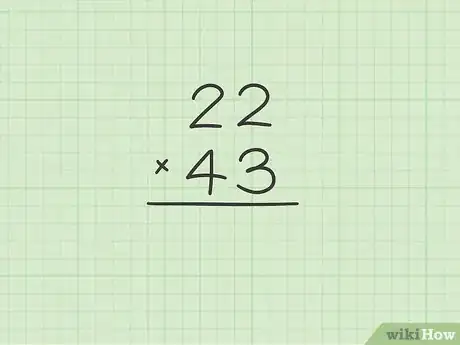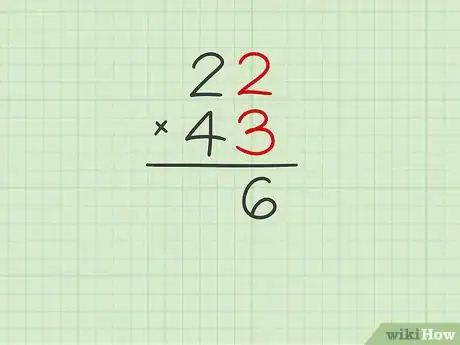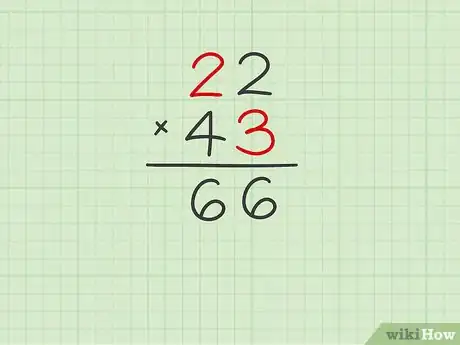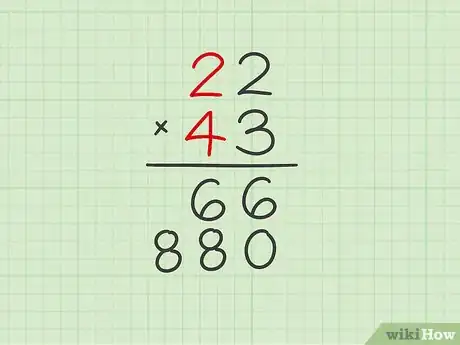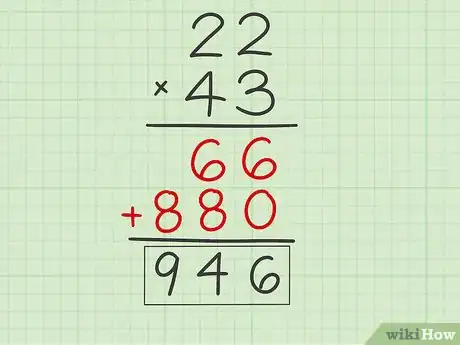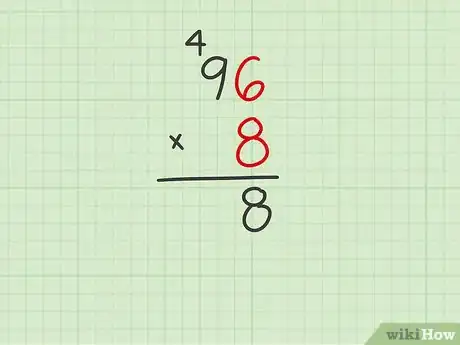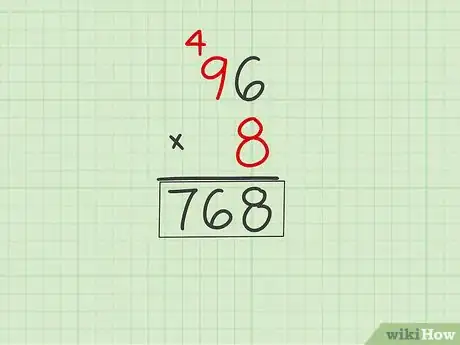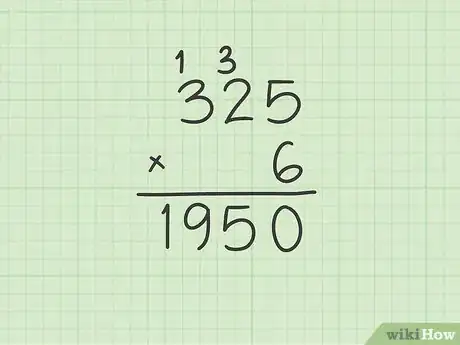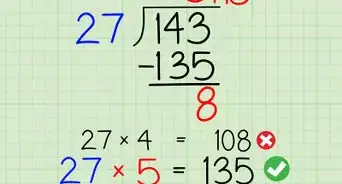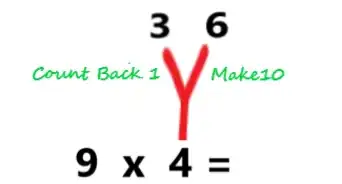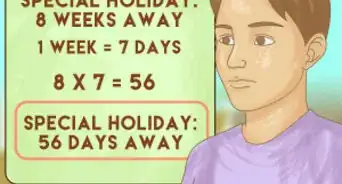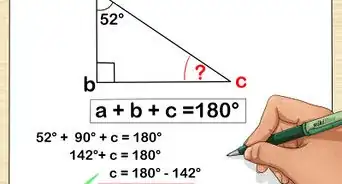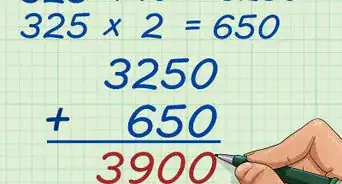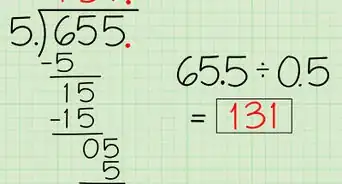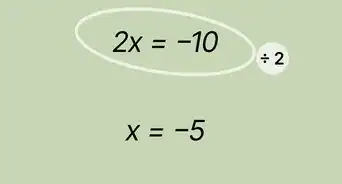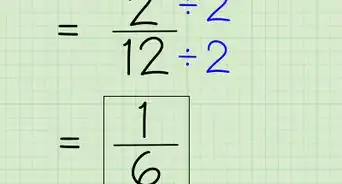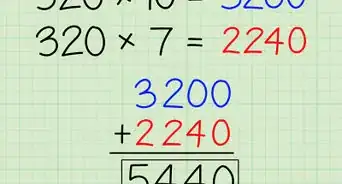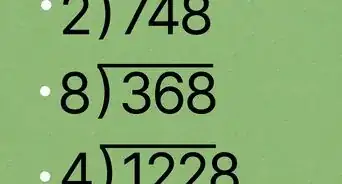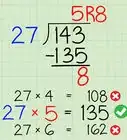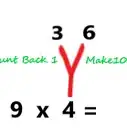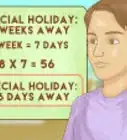This article was co-authored by wikiHow staff writer, Jessica Gibson. Jessica Gibson is a Writer and Editor who's been with wikiHow since 2014. After completing a year of art studies at the Emily Carr University in Vancouver, she graduated from Columbia College with a BA in History. Jessica also completed an MA in History from The University of Oregon in 2013.
This article has been viewed 641,829 times.
Learn more...
Double digit multiplication is simply single-digit multiplication done twice. It starts off just the same with multiplying the numbers in the ones place, and then you add a second round of multiplication using the numbers from the tens place. After getting the basic formula down, there are also a few tricks you can master in order to get this process going as quickly as possible.
Steps
Calculating Double Digits by Double Digits
-
1Write the double-digit numbers on top of each other. Place 1 of the double-digit numbers on top and the other double-digit number directly below it. While there's no right or wrong way to place the numbers, if you have a double-digit that ends with a zero such as 40, place it on the bottom, and put any number with more (nonzero) digits on top. This will let you skip a calculation.[1]
- For example, if you're multiplying 22 by 43, you can put either number on the top or bottom.
-
2Multiply the bottom one's number by the top one's number. For the moment, don't worry about the bottom tens number. Just use the bottom one's number and multiply it by the one's number directly above it. Write the result directly below the line.[2]
- So for 22 x 43, you'll multiply 3 by 2 to get 6.
Advertisement -
3Multiply the bottom one's number by the number of the top ten. Use the same bottom number and multiply it by the number of the top ten. Then write the result under the line so it's directly below the tens space.[3]
- For example, with 22 x 43, you'll now need to multiply 3 by the other 2 to get 6. The number under your line should be 66.
-
4Place a zero under your result. Before you begin multiplying the next part, place a zero under the one's place. This will hold the space so you can begin multiplying the bottom tens number.[4]
- So if you've got 66 as your first result, put a 0 right under the 6 in the ones place.
-
5Multiply the bottom tens number by the top one's number. Now that you've already worked the bottom one's number, multiply the bottom tens number by the top one's number. Write the result next to the zero you wrote.[5]
- For example, 4 x 2 = 8, so write an 8 next to the 0.
-
6Multiply the bottom tens number by the number of the top ten. Write the result next to the number you just wrote down.
- For 4 x 2, write another 8 next to the 80 you already have written down.
-
7Add both of your results to get a final answer. If your numbers don't have any more digits, you're ready to add both rows of your results. The number you get will be the answer.[6]
- For example, you'll need to add 66 + 880 to get 946.
Carrying Results
-
1Multiply and carry results that are larger than 9. If you multiply the ones place number and the result is larger than 9, you'll need to carry the extra value above the top number. Remember to write the extra value over the tens place.[7]
- For example, if you're multiplying 96 by 8, when you multiply the 6 by 8, you'll get 48. Instead of writing 48 below your line, write an 8 and carry the 4.
-
2Multiply the tens place and add the carried value. Multiply the bottom one's place and the top tens' place as you normally would. Then add the value that you carried above the tens place.[8]
- For example, for 96 x 8, multiply 8 and 9 to get 72. Then add the 4 that you carried to get 76. This will give you a final answer of 768.
-
3Continue multiplying and carrying if necessary. If 1 of your numbers is more than 2 digits, keep multiplying and carrying across the number until you've worked all of them.[9]
Practice Problems and Answers
Community Q&A
-
QuestionShould I always add zero in the second column?
 DonaganTop AnswererYes, if it helps you keep your place. Lots of people don't bother with the zero.
DonaganTop AnswererYes, if it helps you keep your place. Lots of people don't bother with the zero. -
QuestionWhy does there have to be a 0 on the bottom?
 Community AnswerThe zero doesn't have to be there. It's just a good reminder that the second partial product has to be offset one column to the left compared to the first partial product. Otherwise, you'll get the wrong answer.
Community AnswerThe zero doesn't have to be there. It's just a good reminder that the second partial product has to be offset one column to the left compared to the first partial product. Otherwise, you'll get the wrong answer. -
QuestionWill this work for 3-digit numbers?
 DonaganTop AnswererYes, the process is the same. If the multiplier is a three-digit number, you wind up with three partial products instead of two before adding up the answer.
DonaganTop AnswererYes, the process is the same. If the multiplier is a three-digit number, you wind up with three partial products instead of two before adding up the answer.
References
- ↑ http://www.ducksters.com/kidsmath/long_multiplication.php
- ↑ https://www.ducksters.com/kidsmath/long_multiplication.php
- ↑ http://www.numbernut.com/arithmetic/multiply-2digit.html
- ↑ http://www.ducksters.com/kidsmath/long_multiplication.php
- ↑ http://www.ducksters.com/kidsmath/long_multiplication.php
- ↑ http://www.ducksters.com/kidsmath/long_multiplication.php
- ↑ http://www.numbernut.com/arithmetic/multiply-carry.html
- ↑ http://www.numbernut.com/arithmetic/multiply-carry.html
- ↑ http://www.numbernut.com/arithmetic/multiply-carry.html
About This Article
To do double digit multiplication, start by putting one number on top of the other number and draw a line under them. Then, multiply the bottom ones number by the top ones number and write the answer under the line. Next, multiply the bottom ones number by the top tens number and write that answer next to the first answer. Once you've done that, place a 0 under your result. Multiply the bottom tens number by the top tens number, then add both results together to get your final answer! To learn how to carry results that are greater than 9, scroll down!
